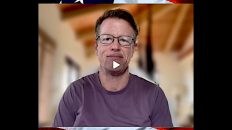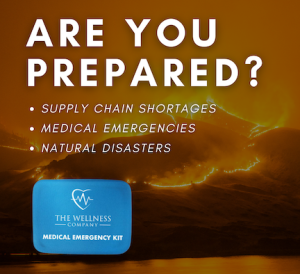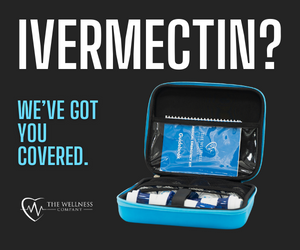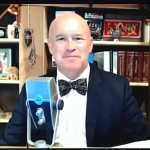Uploaded by ABCNews
June 28, 2011
Ryan Owens reports on the dangers posed by fires in New Mexico. Postings by volunteer groups monitoring the situation on the ground appear beneath this following article.
===
‘Make or Break Day’ for Stopping Los Alamos Fire
By P. Solomon Banda and Susan Montoya Bryan
Associated Press
Los Alamos, N.M.
June 28, 2011
Fire managers say it’s a “make or break day” Tuesday for ensuring flames from a wildfire don’t race into a northern New Mexico town that is home to a government nuclear laboratory that stores sensitive materials.
The wildfire — which has swelled to about 93 square miles — sparked a spot fire at the Los Alamos National Laboratory on Monday. The fire was quickly contained, and lab officials said no contamination was released and radioactive materials stored at spots on the sprawling lab were safe.
Lab officials and fire managers said they’re confident the flames won’t reach key buildings or areas where radioactive waste is stored in barrels above ground.
For the stored waste, officials say a last resort would include spraying foam on the barrels to ensure they aren’t damaged by fire.
Teams from the National Nuclear Security Administration’s Radiological Assistance Program were headed to the scene to help assess any nuclear or radiological hazards, said Kevin Smith, Los Alamos Site Office manager.
“The … teams’ work will provide another level of assurance that the community is safe from potential radiological releases as the fire progresses,” Smith said in a statement.
The lab will be closed through at least Wednesday, with only essential employees permitted back onto laboratory property.
The wildfire has destroyed 30 structures south and west of Los Alamos, for many stirring memories of a devastating blaze in May 2000 that destroyed hundreds of homes and buildings in town. About 12,500 residents have been evacuated from Los Alamos, an orderly exit that didn’t even cause a traffic accident.
Flames were just across the road from the southern edge of the famed lab, where scientists developed the first atomic bomb during World War II. The facility cut natural gas to some areas as a precaution.
The streets of Los Alamos were empty Tuesday with the exception of emergency vehicles and National Guard Humvees. The neighborhoods were quiet, but there were signs that homeowners had left prepared. Propane bottles were placed at the front of driveways and cars were left in the middle of parking lots, away from anything flammable.
Some residents decided to wait out the fire, including Mark Smith, a chemical engineer who works at the lab. He’s not concerned about flames reaching the lab’s sensitive materials.
“The risk of exposure is so small. I wouldn’t sit here and inhale plutonium. I may be crazy but I’m not dumb,” he said.
The lab, which employs about 15,000 people, covers more than 36 square miles and includes about 2,000 buildings at nearly four dozen sites. They include research facilities, as well as waste disposal sites. Some facilities, including the administration building, are in the community of Los Alamos, while others are several miles away from the town.
The spot fire scorched a section known as Tech Area 49, which was used in the early 1960s for a series of underground tests with high explosives and radioactive materials.
Lab spokesman Kevin Roark said environmental specialists were monitoring air quality, but the main concern was smoke.
Lab personnel are monitoring the air for radionuclides and particulate matter. The lab also has monitors that can be used to check for possible radiation contamination from the fire.
The New Mexico Environment Department is monitoring the air for radioactive particles and tritium using low-volume air pumps. The state is also working with the Environmental Protection Agency and the lab to get additional ground-based monitors and an airborne monitor.
He said that the lab has taken many steps to prepare for a wildfire, including thinning trees and underbrush and surrounding key buildings with gravel to create a defensible space. Many of the buildings are also constructed to meet strict standards for nuclear safety and aggressive wildfires are taken into account, he said.
The anti-nuclear watchdog group Concerned Citizens for Nuclear Safety said the fire appeared to be about 3.5 miles from a dumpsite where as many as 30,000 55-gallon drums of plutonium-contaminated waste were stored in fabric tents above ground. The group said the drums were awaiting transport to a dump site in southern New Mexico.
Lab officials at first declined to confirm that such drums were on the property, but in a statement early Tuesday, lab spokeswoman Lisa Rosendorf said such drums are stored in a section of the complex known as Area G. She said the drums contain cleanup from Cold War-era waste that the lab sends away in weekly shipments to the Waste Isolation Pilot Plant.
She said the drums were on a paved area with few trees nearby and would be safe even if a fire reached the storage area. Officials have said it is miles from the flames.
“These drums are designed to a safety standard that would withstand a wildland fire worse than this one,” Rosendorf said.
A crew that had been working at the Arizona wildfires took over efforts at the New Mexico fire Monday, about 18 hours after the blaze started.
Another firefighting team was expected to arrive Tuesday because of the potential for the blaze to more than double in size.
“That’s the biggest threat we have right now to homes in the community,” Deputy Los Alamos County Fire Chief Mike Thompson said late Monday of the spot fires that left hillsides above the town of Los Alamos glowing.
Thompson said containment lines created by firefighters have held despite strong wind.
“We’re pretty confident on that front,” he said. “We’ll pre-treat with foam if necessary, but we really want the buildings to stand on their own for the most part. That is exactly how they’ve been designed. Especially the ones holding anything that is of high value or high risk, for the community, and really, for the rest New Mexico for that matter.”
Many in the area said the current blaze reminded them of the 2000 fire that blackened about 73 square miles and destroyed hundreds of homes and buildings in the western part of the town.
“It took out all the trees and all of the greenery, and it’s just now starting to come back,” said Terry Langham, a retired lab technician whose house survived the 2000 fire. “Now, it’s going to get burned again.”
He said that wildfire in 2000 left a “burn scar” that will likely push the current blaze “a little more rapidly through the area.”
The 2000 fire prompted the lab and residents to cut down trees and take other fire-prevention measures, and firefighters were hopeful that would help.
“Well, you never are safe when you have such a dry situation and you have fuel load and you have vicious winds like this,” said Sen. Tom Udall, D-N.M., who visited evacuees at the Santa Claran Hotel Casino in Espanola. “When you combine all of those together, (it’s) very explosive.”
———
Associated Press writers Bryan and Jeri Clausing in Albuquerque, Barry Massey in Santa Fe and Mark Carlson in Phoenix contributed.
_____
LOCAL REPORTS ON THE FIRE, EVACUATION & RADIATION
One of the lessons of the Cerro Grande Fire, which burned over 47,000 acres during a two-week period in May 2000 in the same areas as the Las Conchas Fire, is that we can’t trust the statements by the officials. Their statements and data eventually end up in reports that say that there was no exposure. For example, the Risk Assessment Corporation reported following the Cerro Grande Fire:
The cancer incidence risk from breathing any LANL-derived chemical or radionuclide released to the air during the fire was less than 1 chance in 1 million.
“Summary Report: Analysis of Exposure and Risks to the Public from Radionuclides and Chemicals Released by the Cerro Grande Fire at Los Alamos,” p . 7 www.racteam.com/docs/Cerro_Grande_Fire_Summary_Report.pdf
But we know the opposite is true because of the stories people have told following the Cerro Grande fire. For example, communities that had never had a case of childhood leukemia began to experience those cancers; animals in the Embudo Valley aborted; and very rare cancers have grown in residents living in communities downwind and downstream of LANL. Many have died and we are so sorry.
In that spirit, please check out the following website for photos and videos of the fire so that you can make your own decisions about whether to evacuate, or when to evacuate. Remember the six “Ps” – lacoa.org/PDF/ESP10/ESP_Bltn_Wildfires2-LACo_0410.pdf
People and pets
Papers, phone numbers and important documents
Prescriptions, vitamins, and eyeglasses
Pictures and irreplaceable memorabilia
Personal computers (information on hard drives, memory and discs)
“Plastic” (credit cards, ATM cards) and cash
*** More ***
1. On the KOAT-TV website: LOS ALAMOS, N.M. — Dr. Michio Kaku discussed his concerns Tuesday for the hazardous materials housed at Los Alamos National Laboratory.
Kaku said around 20,000 to 30,000 barrels of plutonium contaminated waste is stored at the lab. That waste includes everything from gloves to fuel rods, according to Kaku.
“Plutonium is one of the most toxic particles known to science. A particle you can’t even see lodged in your lungs could cause lung cancer,” Kaku said. “What we’re worried about is what happens when the fires go right into these buildings and perhaps pop open some of these 55-gallon drums.”
Right now, Los Alamos National Lab officials said dangerous materials in the lab are secure and do not pose a threat.
Kaku said no one has ever fully tested the lab under real fire conditions.
“What happens if the fire spreads to the very heart of the laboratory? At that point, we have to cross our fingers hoping that ‘secure sites remain secure,’” Kaku said.
Copyright 2011 by KOAT.com. All rights reserved. This material may not be published, broadcast, rewritten or redistributed.
Read more: www.koat.com/news/28386019/detail.html#ixzz1QdMhPysZ
2. Bob Martin of KRQE-TV went up in a helicopter this afternoon. You can see the fabric tents at Area G in the foreground and the fire moving in that direction. www.krqe.com/dpp/weather/wildfires/bob-martin-special-aerial-web-report
3. To view the fire and Area G from satellite on your computer, go to the Nuclear Watch New Mexico blog to learn how to use Google Earth and the US Forest Service information to keep track of the fire. www.nukewatch.org/watchblog/?p=838
You want to focus on the red square areas north of State Road 4 and the location of the Area G fabric tents which store the 20,000 to 30,000 drums of plutonium contaminated wastes – about 3 1/2 miles northeast of the red squares. You can see the four tents west of White Rock. They are also south of the green east-west line.
It appears the Google Earth updates the information about the fires across the U.S. by zooming out. Then you have to zoom back in to see if it has updated the Las Conchas fire.
4. And a big shout out and thank you to all of you who forwarded the Action Alerts to social media networks! We are grateful because we while we can talk about transuranic waste at Area G, we don’t know much about social media tools.
5. There was a press conference today. You can read about it at: www.lamonitor.com/content/press-conference-offers-hope
6. Los Alamos County Update – June 28, 2011 4:30 PM
www.inciweb.org/incident/article/2385/12079/
Incident: Las Conchas Wildfire
Released: 4 hrs. ago
Los Alamos, NM – The Los Alamos County Council will host a town hall meeting tomorrow (Wednesday) with White Rock residents and those who have been evacuated from Los Alamos. A representative of the USFS will be on hand to answer questions about the fire. The meeting will be held at 2:00 p.m. at the White Rock Baptist Church (80 State Rt 4). Atomic City Transit will offer bus service from the two shelters to the meeting. Bus pick up times are: 12:45 p.m. at the Santa Claran Resort Center and 1:15 p.m. at the Cities of Gold Hotel Conference Center.
Media Advisory: Fire Chief Doug Tucker will give a Las Conchas fire update to the press at the Media Staging Area at 20th/Trinity at approximately 7 p.m. The County will continue to co-host Noon news conferences with LANL at the Media Staging Area until further notice.
7. Air Quality Issues from the Incident Information System: www.inciweb.org/incident/article/2385/12058/
8. From Jean Nichols on Tuesday, June 28th in the evening:
Today I was given a medical type mask (AOSafety 1050 Pleats Plus Particulate Respirator Medium Large N95 NiIOSH)
It actually seems to help a lot when outside in the smoke, – at least it helps how my lungs feel. I believe these are the same kinds used in surgical situations.
They are much more comfortable than full respirators or construction dust masks. You can buy them at Walgreens or other pharmacies. We should be asking the Governor or the Red Cross or FEMA or someone in Public Health to make them available to everyone who wants one, especially those with respiratory issues. They could be given out at the food banks this week. While they probably won’t help with the serious radionuclides, I’m sure they will help with some of the other airborne particulates.
9. From Sheri Kotowski of the Embudo Valley Environmental Monitoring Group on Tuesday June 28th in the evening:
Hi Everyone,
Here’s an up date on Las Conchas Fire air monitoring.
I spoke with NMED LANL Oversight at 2:30 PM. Steve Yanicak gave me the
rundown of air monitoring that is happening in and around the lab. They are
short staffed at the moment and they have a lot to do.
NMED changed out filters this morning on AIRNET (low volume) stations
(measuring gross alpha and beta radiation, isotopic uranium and plutonium,
americium, strontium) on the perimeter of LANL and at the airport. They will
have data back in seven days. They are also setting up high volume samplers
that will be analyzed for the same constituents as AIRNET and also for heavy
metals.
The lab has put out 60 additional air monitoring stations. Turn around time
on the data will should be very quick according to NMED Oversight. We should
start seeing data soon. I will find out how the public can access this
information.
EPA is sending out 16 – 24 air monitoring stations. EVEMG is helping to
locate a half a dozen of them up here north east of the lab and in the
plume. They should be arriving tomorrow- Wednesday, and hopefully deployed
very quickly. There will be one located at the Embudo Valley Library. Other
locations are being worked out.
EPA is readying the ASPECT aircraft to begin flying at regular intervals
through the plume of the fire as early as tomorrow- Wednesday. This aircraft
is specially fitted with monitoring equipment and will be measuring
radioactivity as well as detecting other substances of concern.
The NMED Radiation Bureau is locating radiation detection equipment on the
roof top of the hospital in Española, and at locations in Alcalde, Pojoaque
and Nambe.
I hope you find this information useful.
Please feel free to contact me if you have questions. If I don’t have
answers hopefully I will be able to find someone for you to talk to.
Please pass this information on.
Take care,
Sheri
EVEMG
serit@cybermesa.com
505 579 4076
10. Please share this information with others. And yes, our home page has been hacked; we’re working on it.
Pray the Water Canyon fire line will hold the progress of the fire.
Take care All,
CCNS












Add comment